
Grandes Heures de Saint-Emilion
The association Les Grandes Heures of Saint-Emilion offer you high quality classical concerts held within the magnificent wine estates of Saint-Emilion.
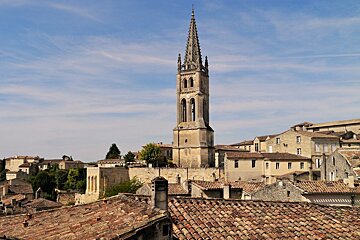
© PWilliamson

© PWilliamson

© PWilliamson

© PWilliamson

© PWilliamson

© PWilliamson
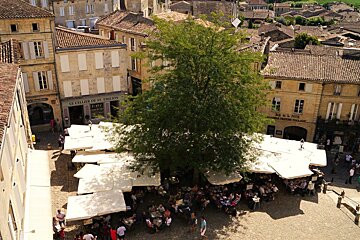
© PWilliamson
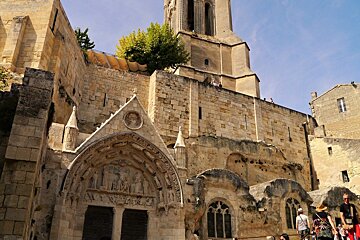
© PWilliamson

© PWilliamson
One of the most beautiful villages in France and fabulous wines
Vineyards were planted around this old town in Roman times and whilst most people associate the name with the wine, the town itself is worth a visit for its ramparted old centre with interesting Romanesque churches and an incredible underground monolithic church.
The town and its surrounding vineyards sit on the UNESCO World Heritage list.
When you enter the town itself you're immediately transported to a different world - one with lavish gated wineries, sumptuous chocolate shops and private bistros for tasting and selling wines.
The streets are narrow and invite you into a labyrinth that takes you down steep alleyways towards to the central Place du Marche. The town offers an abundance of wine shops, châteaux caves, restaurants and boutiques selling jewellery, art, fashion and every type of wine accessory you can imagine.
This is certainly a popular tourist destination, but you can always find a quiet corner to admire the views over to the Tour du Château du Roi or over the sprawling fields of vines that surround the town.
The main events in Saint Emilion revolve around wine, the beginning of the spring harvest during the Fête de Printemps and then the Ban des Vendanges in September. Then in the middle of the summer you can enjoy the Jazz Festival.

The association Les Grandes Heures of Saint-Emilion offer you high quality classical concerts held within the magnificent wine estates of Saint-Emilion.
Going back to prehistoric times this town's history is a patchwork of Romanesque churches and ruins, narrow cobbled streets and vineyards. The vines were planted as far back as the 2nd century by the Romans, who were well known for their love of wine.
The town itself is named after the monk Saint Emilion; a Breton monk who fled south to escape persecution by the Benedictine order during the 8th century. He settled in the area and acquired numerous followers who came to bear witness to the miracles he performed. With the growth in population and the strategic position of the town, it quickly acquired wealth, mainly through wine production. Various religious monuments were erected in the area, including the Saint-Emilion Monolithic Church.
Constructed in the early 12th century, the church is partly subterranean; its three naves, with a small catacomb beneath, were dug into a rocky hillside. The bell tower stands 53m high and is a very obvious sight on the horizon. By the late 20th century, however, the 3,000 ton weight of this tower had shifted far off its supports and was thus susceptible to collapse.
The most obvious and most spectacular of things to see in Saint Emilion is the church, the Eglise Monolithe.
Carved out of the rocky hillside in the 11th and 12th centuries, the church is now one of the biggest of its kind in Europe with underground chambers and catacombs to explore, plus a lot of stairs to climb to the top of the bell tower.
Another obvious landmark on the horizon is the Keep of the King's Castle - La Tour du Château du Roi. More steps to climb here but again the view is definitely worth it.
With the numerous vineyards and wineries having a presence both within and on the outskirts of the town, a visit to one or more of these is a must.
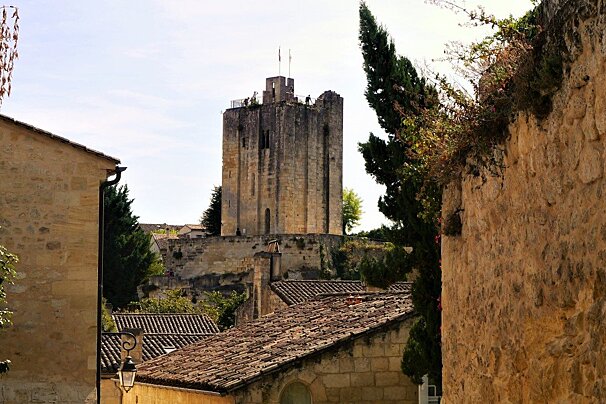
Sited to the west of Saint-Emilion, the impressive square stone keep of this grand King's castle is all that now remains. The views of the city from the tower are well worth the 118 steps.

The monks originally lived just outside Saint-Emilion, but in 1338 they obtained permission from the Pope to establish a monastery within the walls. The cloister was built in the 14th-century.
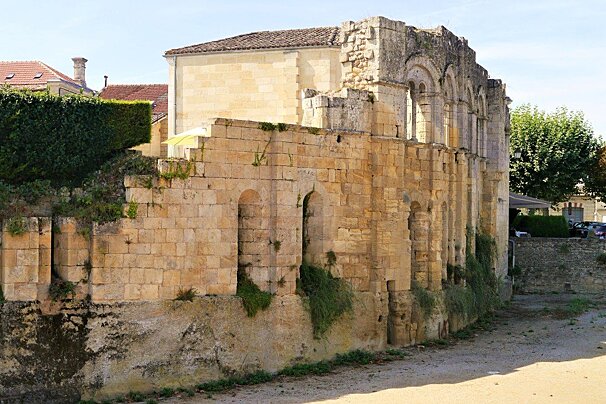
Gifted to Gaillard de la Mothe by his uncle Bertrand de Goth, Archbishop of Bordeaux, who later became Pope Clement V, the Cardinal Palace sits at the entrance to the city of Saint Emilion.
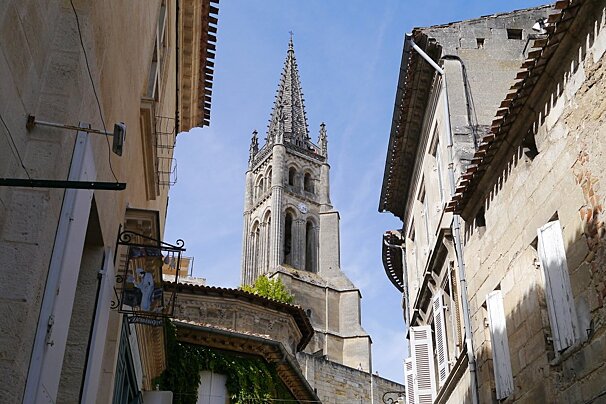
At 68 metres above the ground, looking down on the rooftops of the medieval town, take a deep breath and enjoy the 360° panoramic view of the most famous wine appellation.
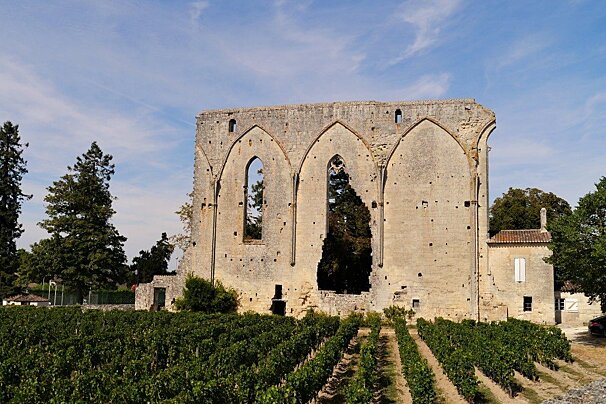
The great wall, or Grandes Murailles, is now all that remains of a once Dominican monastery that was built in the 12th-century.
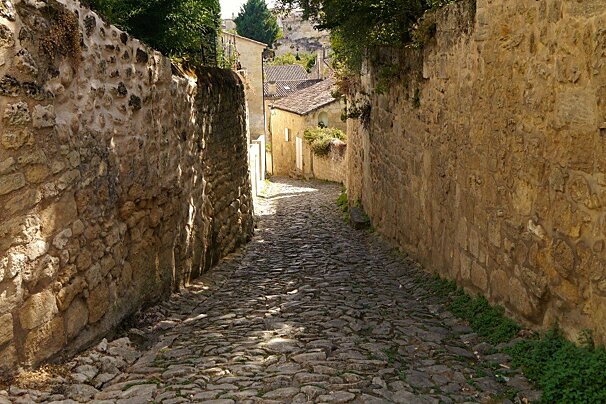
A 'tertre' is a hillock or mound of earth and Saint Emilion has successfully adapted itself by shaping the town around its 'tertres'.
The choice of restaurants in Saint-Emilion is quite outstanding, let alone the choice when you include the châteaux and wineries that surround this pretty town. From fine dining, to a terrace lunch in the sunshine, you can be sure that each dish and course will be accompanied by the finest of Saint-Emilion wine.

This elegant and sophisticated two Michelin star restaurant offers creative dishes designed by chef Cédric Béchade, who plays with colours and textures in his cuisine.

Founded in 1848, this restaurant is one of the oldest in the town of Saint-Émilion, a UNESCO World Heritage site. French creative cuisine is served in its terrace and three dining rooms, accompanied by wines from the region.

This restaurant is located in the Château Troplong Mondot, a large estate on the top of a hill with a winery that produces a 1er Grand Cru Classé. They serve traditional French cuisine with creative contemporary touches.

Offering a generous choice of traditional French dishes and a large wine selection, this restaurant is located in the heart of the picturesque town of Saint-Émilion. Diners can be accommodated in its intimate dining room, its small terrace, or a special table in its wine cellar carved out of the rock.
As with all towns and villages around the Bordeaux area the many vineyards stretch out around you.
A walk through these on a warm summer day is a delight. And then head back to the town of Saint Emilion to enjoy a coffee in one of the pretty cobbled lanes.
A meander around the town itself will be a historical journey as you pass by the public baths and the King's spring, the old gate and ramparts of the town, the ruins and remains of the town walls, the ruins of the cardinals palace and various other buildings of note and examples of medieval architecture.
And if you are not sick of climbing stairs in Saint Emilion then you will certainly need to try climbing the four 'Tertre' of the town. The word tertre is specific to Saint Emilion and is the name used for the steep pedestrian cobblestone streets: Tertre de la Tente, Tertre des Vaillants, Tertre de la Cadène and Tertre de la Porte Saint-Martin.
Having said that, this is wine country and you can't really visit St Emilion without doing a wine tour...
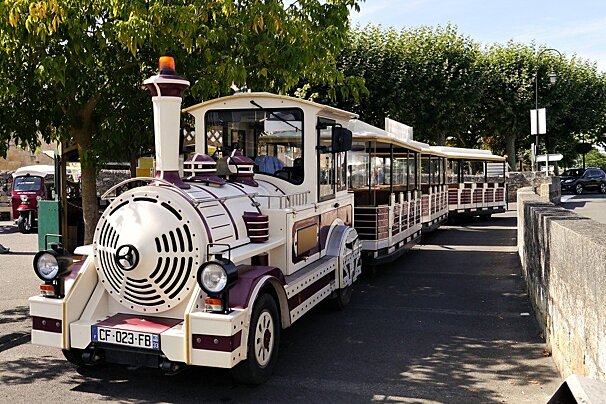
After discovering the city of Saint Emilion this train tour takes you out into the countryside and surrounding vineyards to discover more about the history and culture of wine in this region.

100% electric and 100% silent, the infamous tuk-tuk comes to Saint Emilion to take you on a tour or the town and the vineyards that surround it.

This short stretch of Voie Verte (greenway) is perfect for families looking to stretch their legs in the Dordogne countryside, without having to conquer any hills climbs.
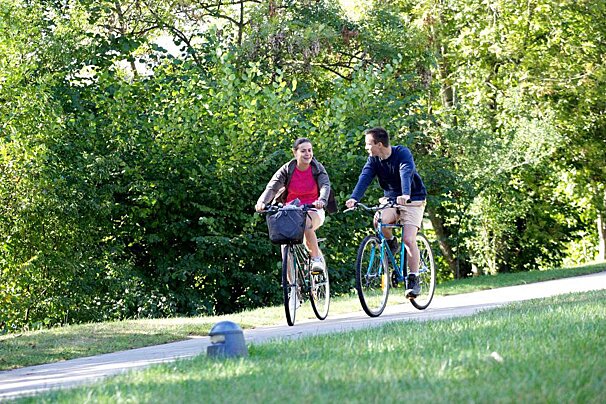
A 23km trail that follows the Isle river through the Perigord countryside from Trelissac (Charrieras) to Marsac (La Roche).
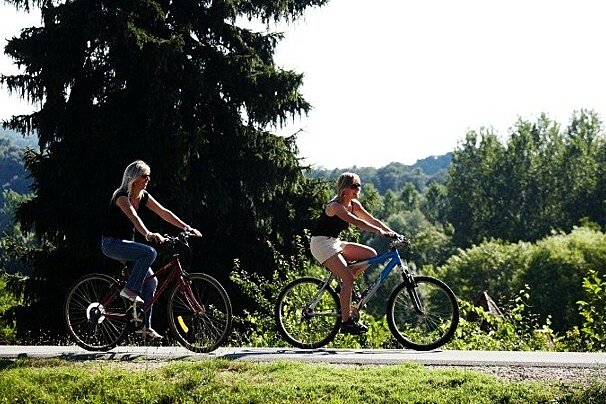
This Voie Verte (greenway) has been created along the track of an old and now unused railway line.
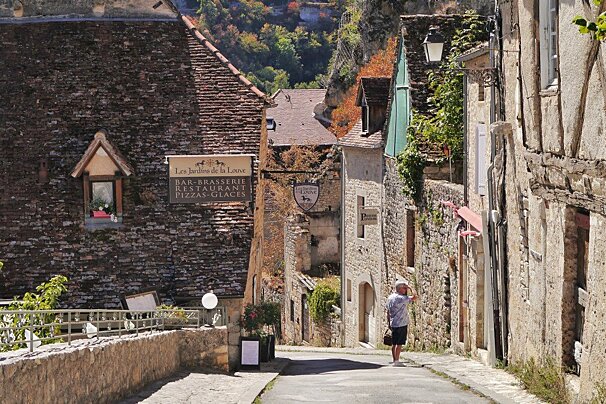
Although just 25km this circular route from Rocamadour does cross some challenging terrain. Partly on river path and some parts on road, you will need to have some experience of cycling to enjoy this route fully.
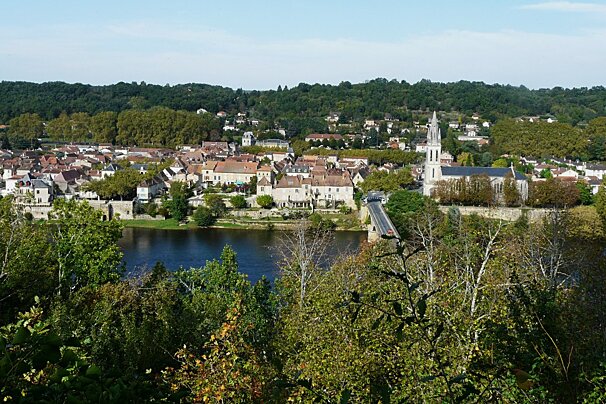
Following part of the GR6 route through the Dordogne this walk takes you from Lalinde on a circular route through the surrounding countryside.

A 23km trail that follows the Isle river through the Perigord countryside from Trelissac (Charrieras) to Marsac (La Roche).
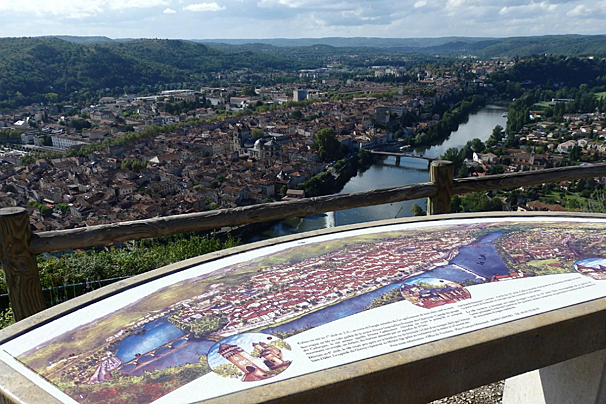
With stunning views over the Lot river and the town of Cahors this walk is worth it just to enjoy the views.
Part of a long distance towpath, there is an interesting section cut out of the rocky cliff face between Bouziès and Saint-Cirq Lapopie which was used to drag barges along the river Lot. It's about five kilometres between the two villages and is a stunning section of the river.
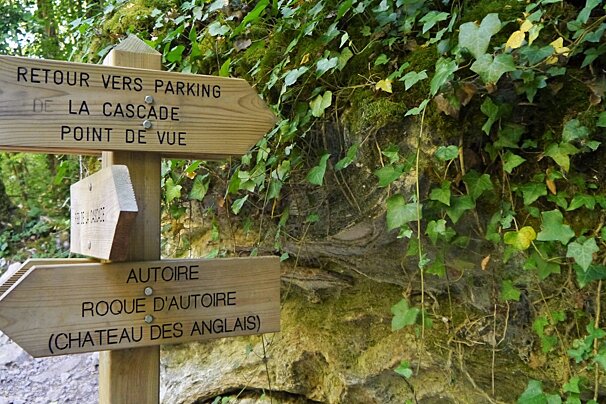
This walk is wonderful and relaxing way to explore the valley of Autoire and the horseshoe shaped cliff band that guards it to the south-west.
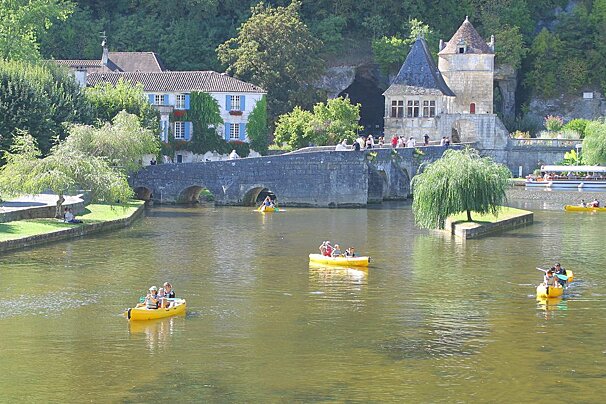
Not only can you take a relaxing journey down the Dronne river in a canoe but you can try your hand at stand up paddle boarding or take to the cliffs and trees for some adventure above ground.
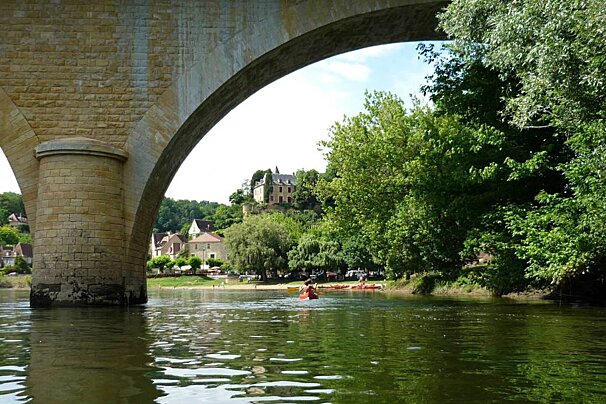
With family, in a group, with friends and at any age, you can explore at your own pace two of the most beautiful rivers of Périgord.
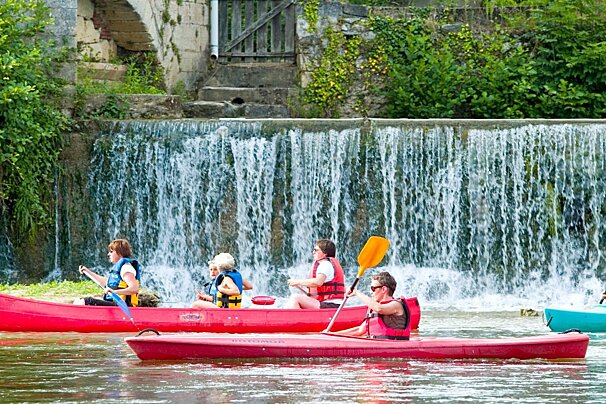
Easy canoeing for everybody. You can navigate with family or friends in peace. You’ll be given a solid equipment, stable canoes and buoyancy aids.

This area provides water-sports for all ages. Renowned for its architectural heritage and sites of natural beauty, you will find that paddling is a great way to relax and have fun whilst enjoying the scenery.
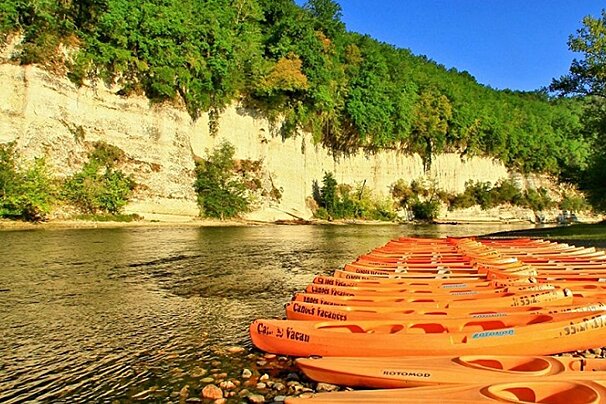
Enjoy a single or multi-day trip down the river Dordogne to town such as Beynac, Castelnaud, Montfort and Fayac.

Hire a canoe or kayak from this company and you can enjoy a gentle river cruise and the chance to explore the wonderful Dordogne river and its banks.
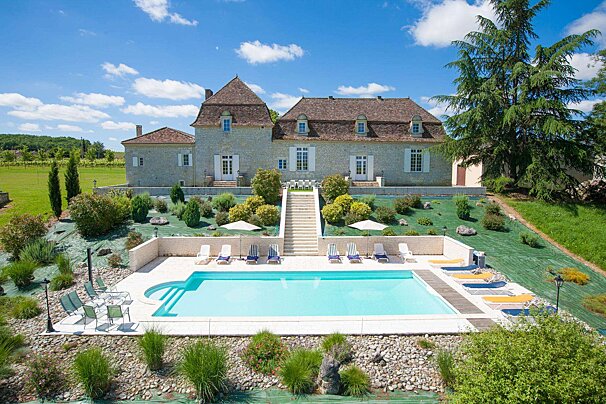
A beautiful property owned by a local viticulturist whose vineyards form part of the grounds around the house.
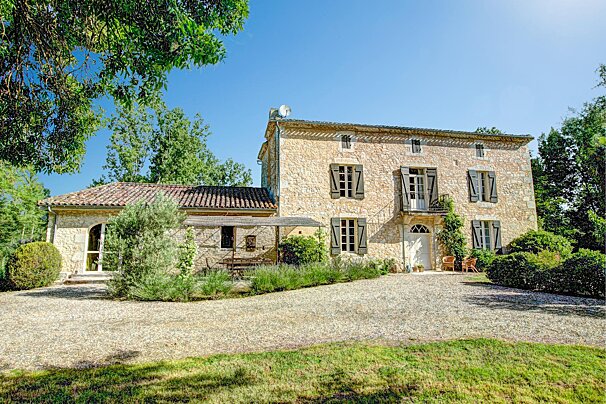
Enjoy French country living at La Castille, a beautifully restored 18th Century stone bastide which offers charm and style in abundance, in an area renowned for delicious food and wine. La Castille is the sister property to La Perigourdine and La Petite Maison.
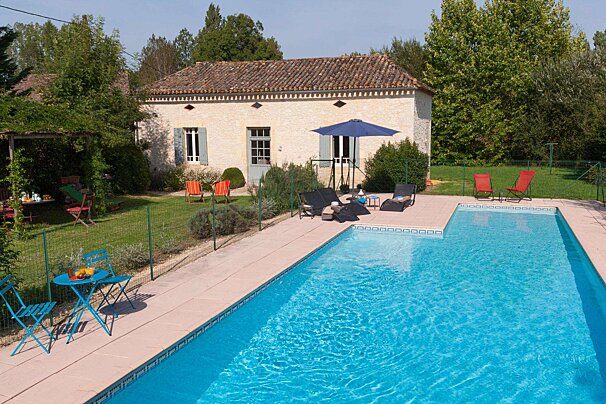
Decorated in chic but subtle style this pretty cream coloured stone cottage is the epitome of a charming rural retreat yet is within walking distance of the impressive bastide of Castillonnes.
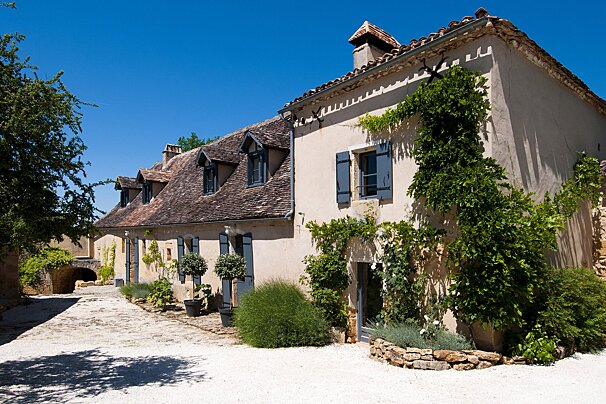
Renovated 16th century farmhouse in Dordogne.

Charming renovated detached cottage in the heart of Dordogne.

A combination of two renovated villas in the heart of Dordogne.
There are some wonderful hotels in saint-Emilion, each one offering charm, history and some sort of link to the vineyards and wineries of the region. If you're looking for luxury then try one of the central hotels, or for something a little more 'French', why not try a château on the outskirts of the town.

The Hostellerie de Plaisance is an unusual and unique place, offering surprising perspectives on the village’s architecture and the edges of the vineyard landscapes.

One-of-a kind property, the 4-star, 19th-century Château is located in the right-bank area of Bordeaux, next to a medieval town. With Saint-Emilion’s most famous wine-producing châteaux at its doorstep, it is less than an hour drive to Bordeaux.

This charming boutique hotel is located in a vineyard, just a short drive from Saint-Emilion. The hotel offers a natural pool with fresh water and a nice garden overlooking the property's 7 acres of vineyards.

Maison de la Commanderie is a 12th century house located in the heart of the village of Saint Emilion with remarkable view over the city and the vineyards.

The Franc Grace Dieu estate house has 4 rooms (Le Parc, Le Jardin, La Pergola and La Cour) each able to sleep 2 people in the heart of the Saint-Emilion wine area, a classified UNESCO World Heritage Site.
Located in the Gironde, close to the border of the Dordogne, Saint Emilion is just 35km north-east of Bordeaux, between the towns of Libourne and Castillon-la-Bataille.

Rarely does such a remarkable opportunity come to market with the combination of a large elegant Maison de Maitre and highly improved accommodations in such a prime location.